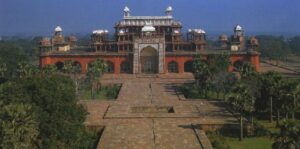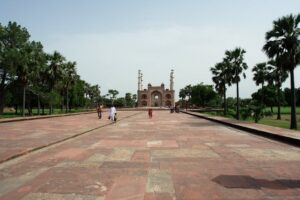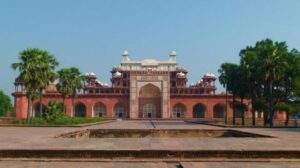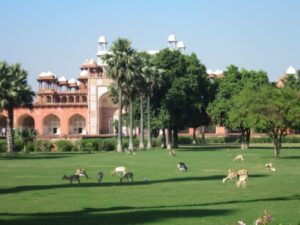
Akbar (r.1556-1605) was an energetic and innovative ruler who succeeded in being a significant unifying force in India. His syncretism was reflected in the architecture built during his reign, including his tomb located in Sikandra, which blends Persian and Hindu elements. Dated inscriptions show that the tomb was completed by Akbar’s son Jahangir in 1614.

Topped with white marble and flanked by graceful minarets, this mausoleum of rough red sandstone stands in a centre of a vast garden which is enclosed by high walls on all sides. In the middle of each enclosing wall is a monumental gateway. The whole garden is divided into four quarters on the conventional charbagh plan.

Each quarter is separated by a high terrace or raised path with a narrow shallow water channel running at the centre. Each terrace has in the centre, a tank with fountains. Various species such as the palmyra palm, Dhak, Ashoka, Imali, Heterofragma adenophyla, Amala and Chandan trees are grown here. The black bucks are also maintained as fauna.

source:
http://www.bl.uk/onlinegallery/onlineex/apac/photocoll/t/019pho000000101u00022000.html
http://www.indiavirtualtour.com/tajmahal/akbartomb.asp
http://mapio.net/pic/p-18075669/
http://gordonbrentingram.ca/studiesdesigns/?paged=2
http://media.finnair.com/Rethink/quality/tag/taj-mahal/index.html


